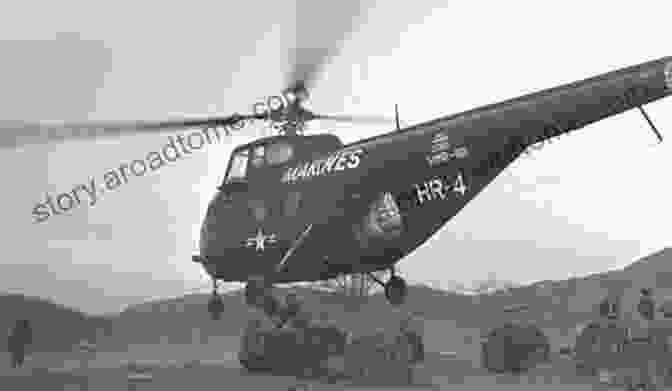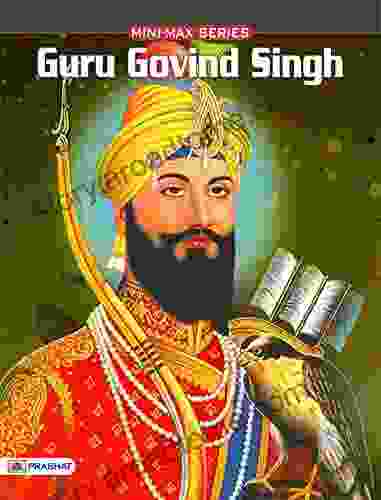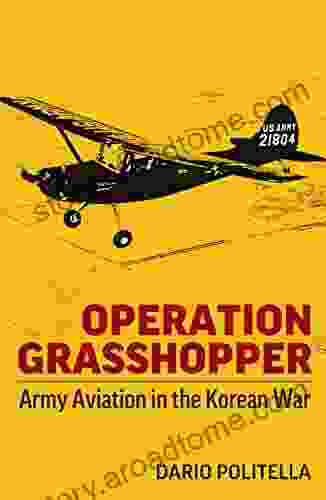Operation Grasshopper: Uncovering the Pivotal Role of Army Aviation in the Korean War


Operation Grasshopper, a pivotal chapter in the annals of military history, showcased the transformative power of army aviation in modern warfare. This comprehensive article delves deep into the origins, execution, and profound impact of Operation Grasshopper, shedding light on the extraordinary contributions of army aviators during the Korean War.
4.5 out of 5
| Language | : | English |
| File size | : | 8558 KB |
| Text-to-Speech | : | Enabled |
| Screen Reader | : | Supported |
| Enhanced typesetting | : | Enabled |
| Word Wise | : | Enabled |
| Print length | : | 270 pages |
Origins and Genesis
The seeds of Operation Grasshopper were sown in the aftermath of World War II, as military strategists recognized the potential of helicopters in combat operations. Korea, a rugged peninsula divided along ideological lines, became the testing ground for these innovative ideas.
In early 1951, General Douglas MacArthur, commander of United Nations forces in Korea, conceived the idea of using helicopters to transport troops and supplies deep behind enemy lines. This bold plan, dubbed Operation Grasshopper, aimed to disrupt enemy logistics and strike at vulnerable targets with lightning speed.
Assembling the Grasshopper Force
To execute this ambitious plan, the U.S. Army assembled a task force of carefully selected aviators and aircraft. The core of the force consisted of the newly formed 3rd Helicopter Battalion, under the command of Lieutenant Colonel Harry A. McBride.
The battalion's fleet of Sikorsky H-19 helicopters, nicknamed "Chickasaws," were particularly suited for the task at hand. These versatile aircraft could transport up to seven fully equipped soldiers or carry a substantial amount of cargo.
Execution: Swift and Surgical Strikes
On August 17, 1951, Operation Grasshopper was launched with a series of daring raids. The 3rd Helicopter Battalion, supported by fighter planes and artillery, infiltrated deep into enemy territory, dropping paratroopers and supplies at strategic locations.
The helicopter crews faced intense enemy fire, but their skill and determination prevailed. They successfully delivered troops and supplies to remote outposts, disrupting supply lines and creating chaos among the enemy forces.
One particularly notable raid targeted the critical supply hub of Yangyang. A force of 20 helicopters, under the command of Major Martin J. Smith, surprised the enemy with a swift and surgical strike, destroying enemy supplies and capturing several prisoners.
Swift and Devastating Results
The impact of Operation Grasshopper was swift and devastating. The enemy was unable to cope with the sudden and unexpected strikes, and their supply lines were severely disrupted. The raids forced the enemy into a defensive posture, blunting their momentum and contributing to the eventual stalemate of the Korean War.
Beyond its immediate tactical successes, Operation Grasshopper left an enduring legacy in military aviation. It showcased the immense potential of helicopters in modern warfare, revolutionizing the way troops were deployed and supplies transported.
Legacy and Lessons Learned
The lessons learned from Operation Grasshopper continue to shape military aviation doctrine to this day. The ability to deploy troops and supplies deep behind enemy lines proved invaluable, and the concept of vertical envelopment became a cornerstone of modern military strategy.
Operation Grasshopper also demonstrated the importance of close coordination between aviation and ground forces. The helicopters could not have operated effectively without the support of artillery and fighter aircraft, and the troops on the ground relied heavily on the aviation assets to provide them with logistical support and evacuation capabilities.
Operation Grasshopper was a pivotal moment in the history of aviation and military strategy. The daring raids conducted by army aviators during the Korean War revolutionized the way troops were deployed and supplies transported, paving the way for the widespread use of helicopters in modern warfare.
Today, the legacy of Operation Grasshopper lives on, as army aviation continues to play a critical role in global military operations. The lessons learned during that pivotal chapter in history ensure that the next generation of aviators is well-equipped to meet the challenges of the 21st century and beyond.
4.5 out of 5
| Language | : | English |
| File size | : | 8558 KB |
| Text-to-Speech | : | Enabled |
| Screen Reader | : | Supported |
| Enhanced typesetting | : | Enabled |
| Word Wise | : | Enabled |
| Print length | : | 270 pages |
Do you want to contribute by writing guest posts on this blog?
Please contact us and send us a resume of previous articles that you have written.
 Book
Book Novel
Novel Page
Page Chapter
Chapter Text
Text Story
Story Genre
Genre Reader
Reader Library
Library Paperback
Paperback E-book
E-book Magazine
Magazine Newspaper
Newspaper Paragraph
Paragraph Sentence
Sentence Bookmark
Bookmark Shelf
Shelf Glossary
Glossary Bibliography
Bibliography Foreword
Foreword Preface
Preface Synopsis
Synopsis Annotation
Annotation Footnote
Footnote Manuscript
Manuscript Scroll
Scroll Codex
Codex Tome
Tome Bestseller
Bestseller Classics
Classics Library card
Library card Narrative
Narrative Biography
Biography Autobiography
Autobiography Memoir
Memoir Reference
Reference Encyclopedia
Encyclopedia Mark Lazenby
Mark Lazenby Neville Robinson
Neville Robinson Lee Lanier
Lee Lanier Lorenz Engell
Lorenz Engell Lydia Tresselt
Lydia Tresselt Sachidanand Jha
Sachidanand Jha Maarten Otte
Maarten Otte Tatiana Baldina
Tatiana Baldina Lisa Lewison
Lisa Lewison Richard E Burnett
Richard E Burnett Lora O Brien
Lora O Brien Leanne Paradox
Leanne Paradox Laura Town
Laura Town Tom Meyer
Tom Meyer Leah Sottile
Leah Sottile M B Ryther
M B Ryther Nolan Peterson
Nolan Peterson Ryan Mcrae
Ryan Mcrae Leonard F Koziol
Leonard F Koziol Michael J Lee
Michael J Lee
Light bulbAdvertise smarter! Our strategic ad space ensures maximum exposure. Reserve your spot today!

 Colin RichardsonUncover the Twisted Tale: Lori Vallow, Chad Daybell, and the Story of Murder,...
Colin RichardsonUncover the Twisted Tale: Lori Vallow, Chad Daybell, and the Story of Murder,...
 Leslie CarterUnlock Vibrant Health with Dr. Sebi's Alkaline Anti-Inflammatory Diet for...
Leslie CarterUnlock Vibrant Health with Dr. Sebi's Alkaline Anti-Inflammatory Diet for...
 Cole PowellUnlock the Power of Communication: My First of Sign - The Essential Guide to...
Cole PowellUnlock the Power of Communication: My First of Sign - The Essential Guide to... Damon HayesFollow ·9.8k
Damon HayesFollow ·9.8k Chandler WardFollow ·8.8k
Chandler WardFollow ·8.8k Holden BellFollow ·10.6k
Holden BellFollow ·10.6k Cody RussellFollow ·9.3k
Cody RussellFollow ·9.3k Cooper BellFollow ·19.4k
Cooper BellFollow ·19.4k Jamie BellFollow ·11.6k
Jamie BellFollow ·11.6k Douglas FosterFollow ·12.5k
Douglas FosterFollow ·12.5k Edgar HayesFollow ·4.3k
Edgar HayesFollow ·4.3k

 E.M. Forster
E.M. ForsterThe Real Blueprint to Short-Term Rental Success
Are you ready to create a...

 Mark Mitchell
Mark MitchellMidas Touch: The Astrology Of Wealth
Are you ready to tap into the cosmic forces...

 Grant Hayes
Grant HayesPrecarious Creativity: Unpacking the Global Media and...
In the ever-evolving landscape of the...

 Cameron Reed
Cameron ReedGuru Govind Singh: A Life of Courage and Inspiration for...
Guru Govind Singh, the tenth Sikh guru,...

 Yukio Mishima
Yukio MishimaCastles & Shapes: The Enchanting World of Ris...
In the realm of...

 Jerome Blair
Jerome BlairGolden Keys To Jyotisha Volume Ten: The Ultimate Guide to...
Embark on an...
4.5 out of 5
| Language | : | English |
| File size | : | 8558 KB |
| Text-to-Speech | : | Enabled |
| Screen Reader | : | Supported |
| Enhanced typesetting | : | Enabled |
| Word Wise | : | Enabled |
| Print length | : | 270 pages |






